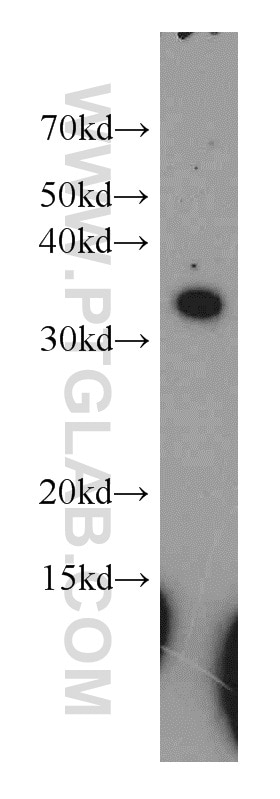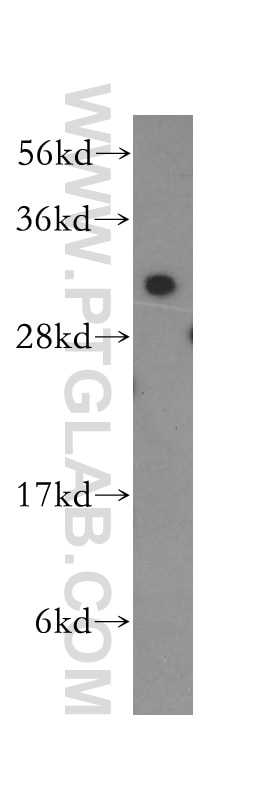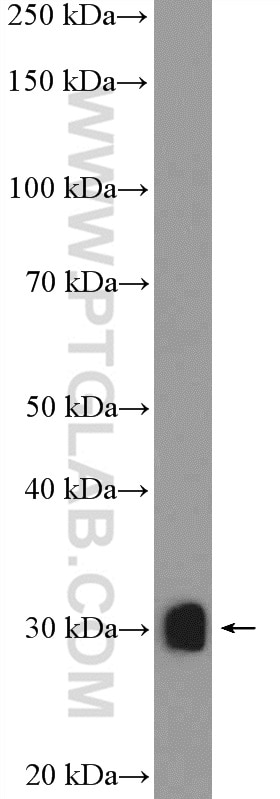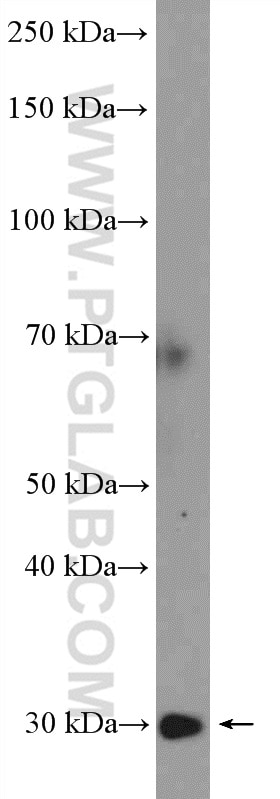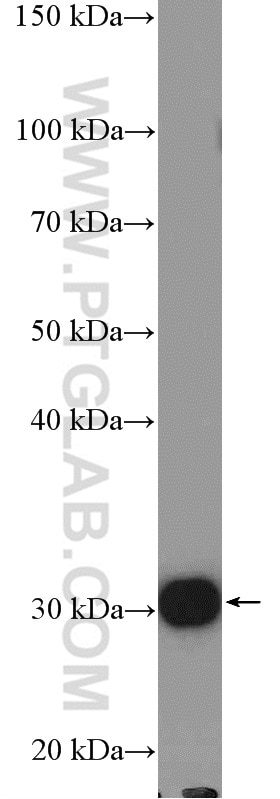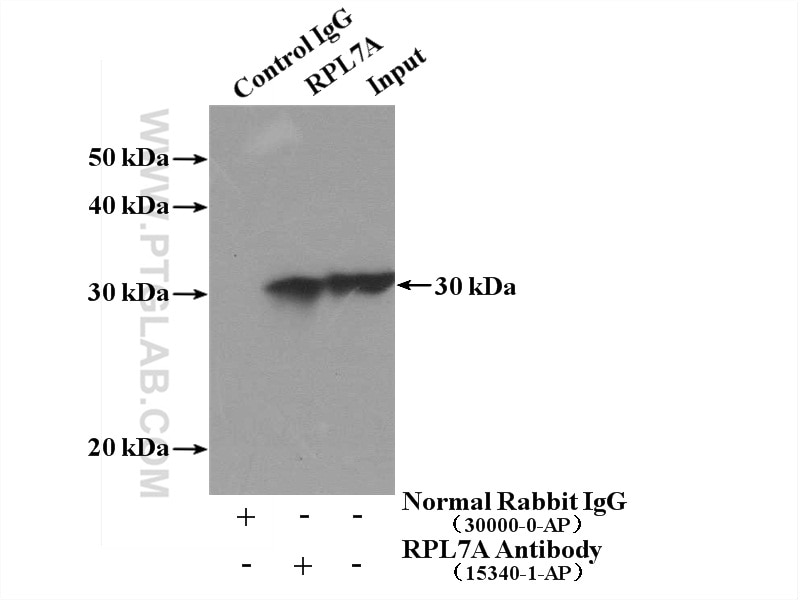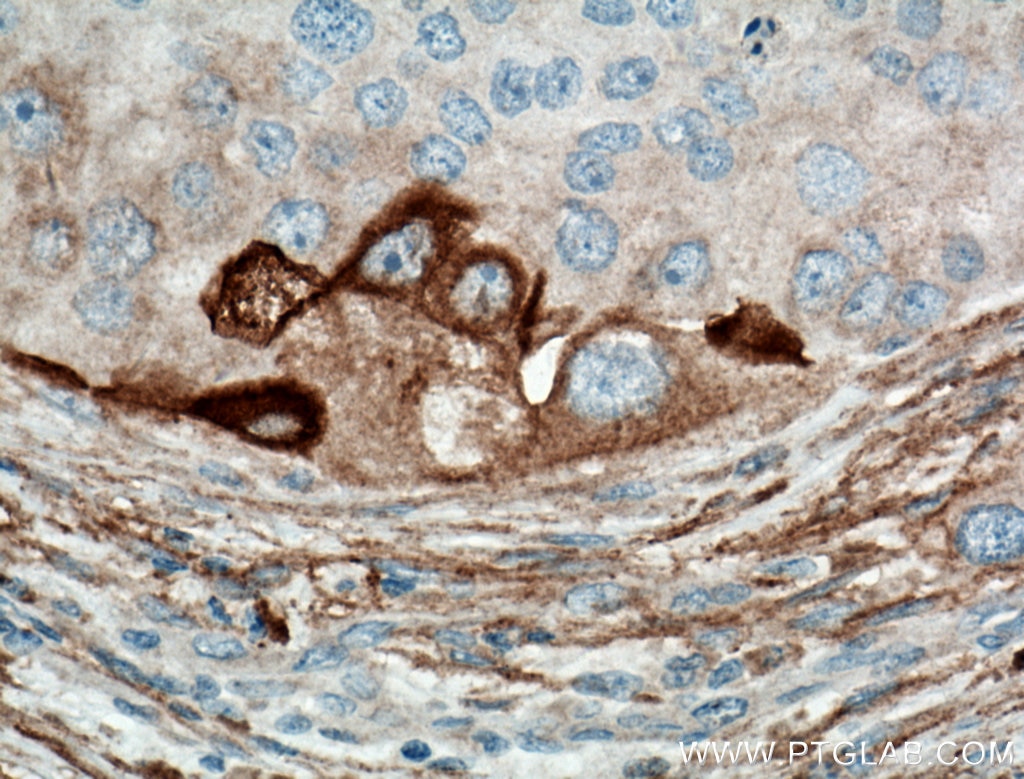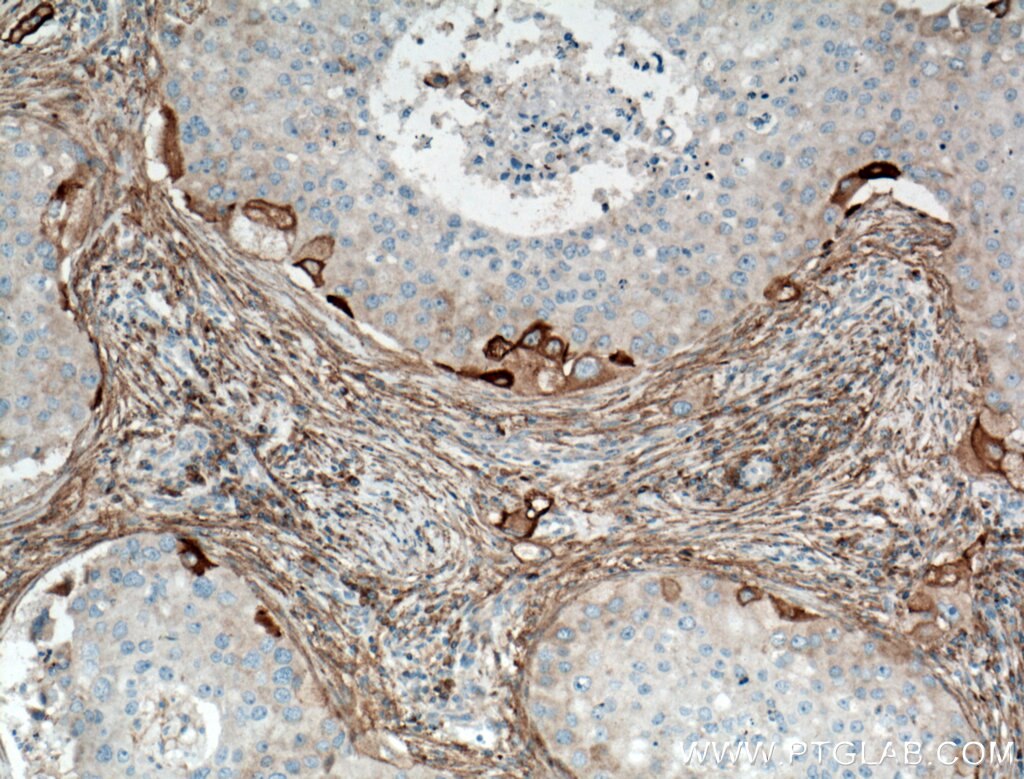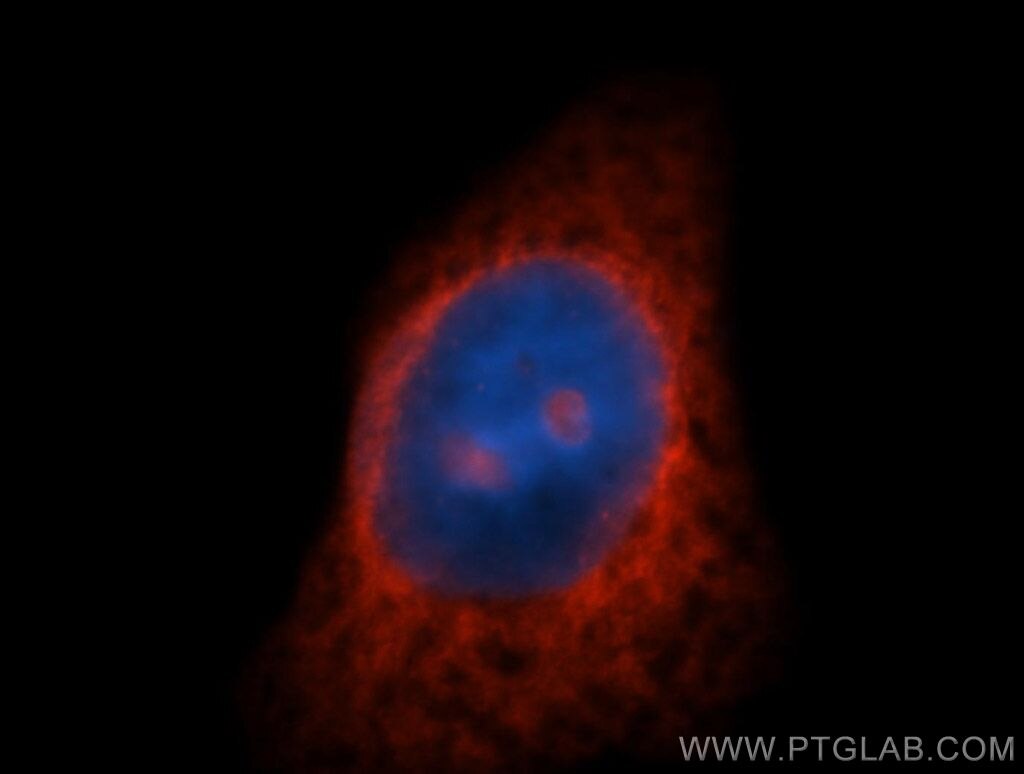Anticorps Polyclonal de lapin anti-RPL7A
RPL7A Polyclonal Antibody for WB, IHC, IF/ICC, IP, ELISA
Hôte / Isotype
Lapin / IgG
Réactivité testée
Humain, rat, souris et plus (1)
Applications
WB, IHC, IF/ICC, IP, ELISA
Conjugaison
Non conjugué
N° de cat : 15340-1-AP
Synonymes
Galerie de données de validation
Applications testées
| Résultats positifs en WB | cellules MCF7, cellules MCF-7, tissu hépatique de souris, tissu rénal de rat, tissu rénal de souris |
| Résultats positifs en IP | tissu rénal de souris |
| Résultats positifs en IHC | tissu de cancer du sein humain, il est suggéré de démasquer l'antigène avec un tampon de TE buffer pH 9.0; (*) À défaut, 'le démasquage de l'antigène peut être 'effectué avec un tampon citrate pH 6,0. |
| Résultats positifs en IF/ICC | cellules HepG2 |
Dilution recommandée
| Application | Dilution |
|---|---|
| Western Blot (WB) | WB : 1:500-1:2000 |
| Immunoprécipitation (IP) | IP : 0.5-4.0 ug for 1.0-3.0 mg of total protein lysate |
| Immunohistochimie (IHC) | IHC : 1:50-1:500 |
| Immunofluorescence (IF)/ICC | IF/ICC : 1:20-1:200 |
| It is recommended that this reagent should be titrated in each testing system to obtain optimal results. | |
| Sample-dependent, check data in validation data gallery | |
Applications publiées
| WB | See 7 publications below |
| IF | See 5 publications below |
| IP | See 1 publications below |
Informations sur le produit
15340-1-AP cible RPL7A dans les applications de WB, IHC, IF/ICC, IP, ELISA et montre une réactivité avec des échantillons Humain, rat, souris
| Réactivité | Humain, rat, souris |
| Réactivité citée | Chèvre, Humain, souris |
| Hôte / Isotype | Lapin / IgG |
| Clonalité | Polyclonal |
| Type | Anticorps |
| Immunogène | RPL7A Protéine recombinante Ag7543 |
| Nom complet | ribosomal protein L7a |
| Masse moléculaire calculée | 266 aa, 30 kDa |
| Poids moléculaire observé | 30-32 kDa |
| Numéro d’acquisition GenBank | BC005128 |
| Symbole du gène | RPL7A |
| Identification du gène (NCBI) | 6130 |
| Conjugaison | Non conjugué |
| Forme | Liquide |
| Méthode de purification | Purification par affinité contre l'antigène |
| Tampon de stockage | PBS with 0.02% sodium azide and 50% glycerol |
| Conditions de stockage | Stocker à -20°C. Stable pendant un an après l'expédition. L'aliquotage n'est pas nécessaire pour le stockage à -20oC Les 20ul contiennent 0,1% de BSA. |
Informations générales
Ribosomal proteins are a major component of ribosomes, which catalyze protein synthesis. RPL7a, which is a component of the 60S large ribosomal subunit, has additional functions involved in cell growth and differentiation that occur via interaction with human thyroid hormone receptor (THR) and retinoic acid receptor (RAR) and in turn inhibit the activities of the two nuclear hormone receptors [PMID:21505254].
Protocole
| Product Specific Protocols | |
|---|---|
| WB protocol for RPL7A antibody 15340-1-AP | Download protocol |
| IHC protocol for RPL7A antibody 15340-1-AP | Download protocol |
| IF protocol for RPL7A antibody 15340-1-AP | Download protocol |
| IP protocol for RPL7A antibody 15340-1-AP | Download protocol |
| Standard Protocols | |
|---|---|
| Click here to view our Standard Protocols |
Publications
| Species | Application | Title |
|---|---|---|
Cell Regnase-1 and Roquin Regulate a Common Element in Inflammatory mRNAs by Spatiotemporally Distinct Mechanisms. | ||
Mol Cell Estrogen-Related Hormones Induce Apoptosis by Stabilizing Schlafen-12 Protein Turnover. | ||
Acta Neuropathol Commun Inefficient quality control of ribosome stalling during APP synthesis generates CAT-tailed species that precipitate hallmarks of Alzheimer's disease | ||
Nucleic Acids Res The induction of p53 correlates with defects in the production, but not the levels, of the small ribosomal subunit and stalled large ribosomal subunit biogenesis | ||
Am J Cancer Res UBE2S targets RPL26 for ubiquitination and degradation to promote non-small cell lung cancer progression via regulating c-Myc | ||
Nat Commun Nuclear and cytoplasmic specific RNA binding proteome enrichment and its changes upon ferroptosis induction |
